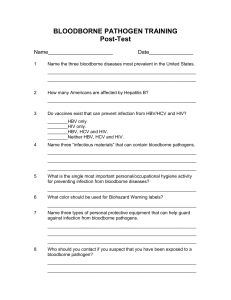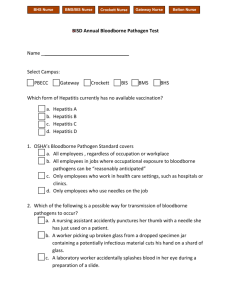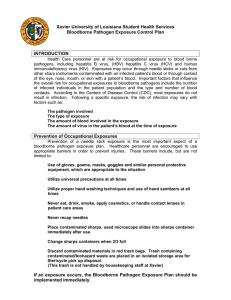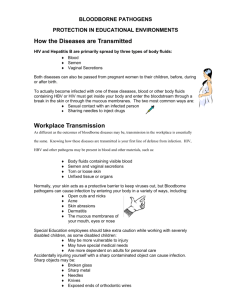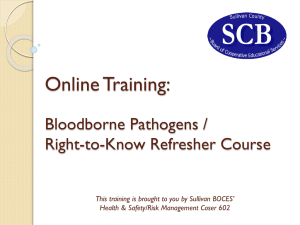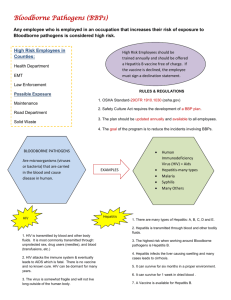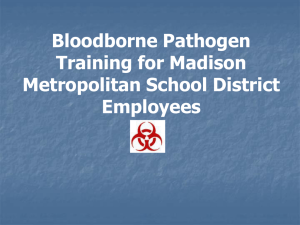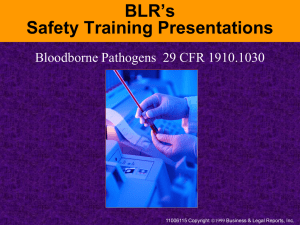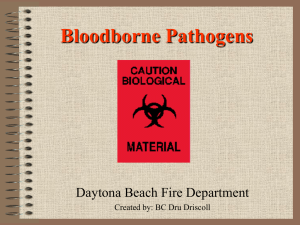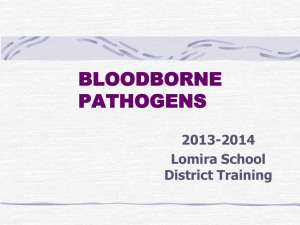OSHA`s Revised Bloodborne Pathogens Standard
advertisement
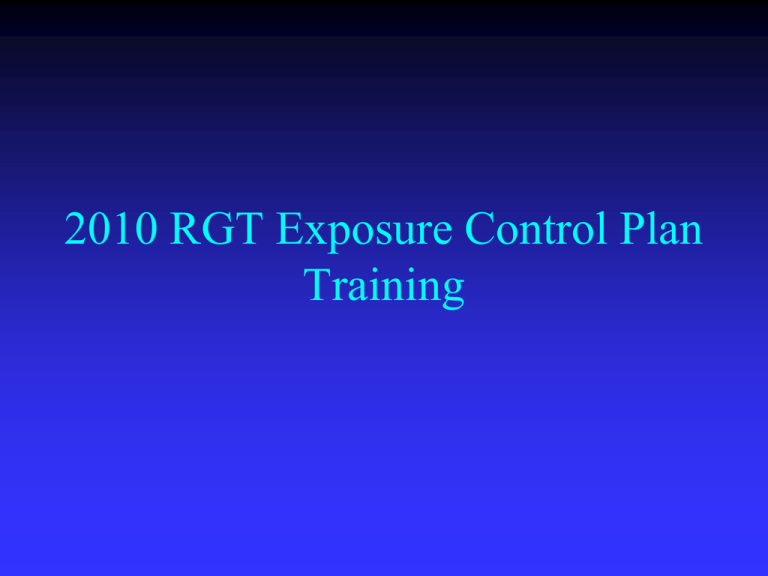
2010 RGT Exposure Control Plan Training Course Objectives: Brief overview of your Department’s “Exposure Control Plan”. Fulfill WISHA and OSHA annual training requirements. Define what a bloodborne pathogen is and what to do if an exposure occurs. Assist you in preparing for 10 question quiz on your Department’s “Exposure Control Plan.” Exposure Control Plan An Exposure Control Plan is the focal point of any bloodborne pathogens exposure prevention program. It is required by law to have a written “Exposure Control Plan” if workers are at risk for a bloodborne pathogens exposure. Exposure Control Plan Cont. It is your Department’s written plan for reducing bloodborne pathogen exposures and what to do if one occurs! Where is your Department’s Exposure Control Plan? Hard copies are located in the MSA’s and MSO’s office at Station 11. Electronic copies are available on your department’s city intranet. Online at RFTD’s web site. Who is responsible for your department’s Exposure Control Plan? The individual responsible for your department’s Exposure Control Plan is the department’s, “Infection Control Officer”. Who is your department’s Infection Control Officer? Redmond’s Infection Control Officer is Jim Duren. Kirkland’s Infection Control Officer is Dave Kryger. Woodinville’s Infection Control Officer is Cliff Griffon. What is a Bloodborne Pathogen? Pathogen is defined as a microorganism that can cause disease. Bloodborne pathogens are infectious materials in blood that can cause disease in humans. The 3 most common bloodborne pathogens! HIV – Human Immunodeficiency Virus. HBV – Hepatitis B Virus. HCV – Hepatitis C Virus. What are the 3 different modes of transmission for BBPs? Inhalation (Air) – Cough or sneeze Ingestion (Food & Water) – Contaminated food and water. Contact (Bloodborne) – Mucous membrane, needle stick, sexual contact. What is a reportable Infectious Disease Exposure? Any specific eye, mouth, or other mucous membrane, non-intact skin, or parenteral contact with blood or other potentially infectious materials (OPIM) that result from the performance of an employee’s duties. Post Exposure Now What? Immediately initiate self care by washing the effected area with soap and water or utilizing an antimicrobial hand cleaner. Locate and utilize the “Exposure Packet” located on all fire department vehicles or in the MSA’s, MSO’s and B.C’s offices. What’s in the “Exposure Packet?” Body Fluid Exposure Flow Chart Employee Check List Supervisor Check List Bodily Fluid Exposure Worksheet Health Care Professional Reports Confidential Employee Report Misc Forms Your Health Provider and Employer will need. Who is responsible for reporting an exposure and filling out the forms? You Are!!! Why is it Extremely Important to Report All Exposures Immediately? You are required to! Time sensitive prophylactic treatment! Enable source patient’s blood to be tested for BBPs. Enable the department to track exposures and review ways to prevent in the future. How does your department limits your exposure to BBPs? Written Exposure Control Plan. Infection Control systems – SOPs and Guidelines. Controlling exposure through selection and implementation of Safer Medical Devices and administrative controls Provide and require you to use PPE. Annual Training on BBPs. Provide Hepatitis B Vaccination. Signs and labeling What can you do to reduce BBPs Exposure? The #1 thing you can do is wash your hands on a regular basis and after every call! Follow all SOP’s and SOG’s. Know your Departments “Exposure Control Plan!” Use PPE!!! Stay alert! How to Pass the Quiz! Read and Understand your Department’s “Exposure Control Plan.” Review PowerPoint Presentation. Practice Safe Work Place Habits! And if all else fails….”Corner your Department’s Training Officer for help!”
